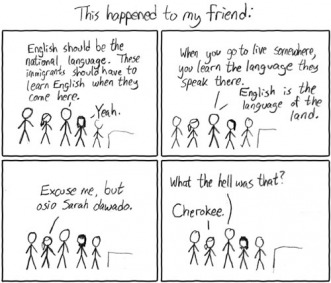Using Webcomics to Improve Media Literacy
Media literacy is “the ability to critically analyze and decode messages embedded in various media productions” (Carducci and Rhoads 133).
Webcomics are a fascinating type of media that offer a means for students to analyze, “decode messages,” and even produce their own artifacts. At their most basic, webcomics are a combination of image and minimal amounts of text, and at their most complex, they are incredible works of art with text, image, sound, and hyperlinks. By exploring comics online in the classroom, teachers can shed light on the (perhaps unnoticed) force of webcomics in American culture. In other words, these comics and cartoons, like other media, are not simply a “passive mirror to society,” but a way of manipulating society, “like a caricature manipulates its subject” (Kaftandjiev 150).
How Webcomics Question Identities Created by the Media...

http://xkcd.com
As students understand how media, specifically cartoons and webcomics, helps construct identities, they can begin to interpret visual rhetoric rather than simply “read content” (Werner 93). Take the xkcd comic to the left; through the movement of stick figure images and text from one panel to the next, this comic becomes more than entertainment. It is a vehicle for understanding how the image and text move the viewer to react, and this realization can inspire a powerful awareness in students about the power of the media to change how people think.
Author: Jennifer Lundstrem
Author: Jennifer Lundstrem
